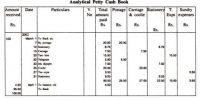In the liabilities and owners’ equity section of the balance sheet, the first grouping is current liabilities. Current liabilities are obligations that the company is to pay within the coming year or its operating cycle, whichever is longer. Common examples are accounts payable, wages payable, bank loans payable, interest payable, and taxes payable. Also included as current liabilities are current maturities of long-term obligations-payments to be made within the next Year on long-term obligations.
With the current liabilities section, companies usually list notes payable first, followed by accounts payable. Other items then follow in the order of their magnitude.
Users of financial statements look closely at the relationship between current assets and current liabilities. This relationship is important in evaluating a company’s liquidity-its ability to pay obligations expected to be due within the next year. When current assets exceed current liabilities at the balance sheet date, the likelihood of paying the liabilities is favorable. When the reverse is true, short-term creditors may not be paid, and the company may ultimately be forced into bankruptcy.















